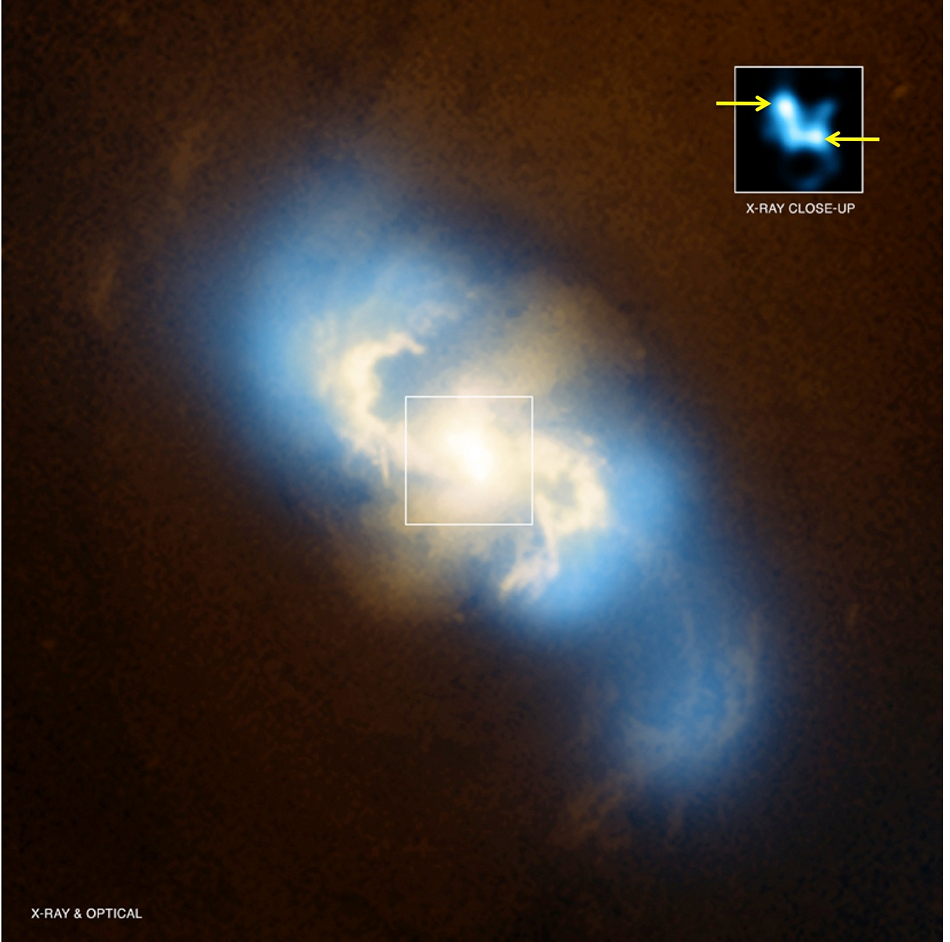
 Credit: X-ray: NASA/CXC/SAO/G.Fabbiano et al; Optical: NASA/STScI
Credit: X-ray: NASA/CXC/SAO/G.Fabbiano et al; Optical: NASA/STScI
Double Super
The centers of most (if not all) galaxies seem to harbor supermassive black holes measuring in at millions or even billions of times the mass of the sun. How these monsters form is an astrophysical mystery. One possible way is through the accretion of matter around the black hole. Another way is via the merger of smaller black holes into larger and larger black holes, eventually forming an enormously massive single black hole. There are actually a few galaxies in which double black holes have been found. These double systems are often the result of mergers of galaxies each containing a supermassive black hole. Now the Chandra X-ray Observatory has found evidence of a double supermassive black in an otherwise normal-looking spiral galaxy, much like our own Milky Way. The image above shows images of this galaxy, dubbed NGC 3393. The Chandra X-ray image is in blue and an optical image from HST is shown in gold. The X-ray emission follows the spiral shape of the galaxy. The inset in the upper right shows a close-up X-ray image of the center of NGC 3393. Chandra's superb imaging capability reveals two X-ray sources (marked by the yellow arrows). X-rays from these sources are produced by the accretion of material by two super black holes of more than a million solar masses each. Astronomers believe these two sources are the result of a small galaxy falling into a larger one, a so-called "minor merger". At a distance of "only" 160 million light years, NGC 3393 is the closest example of a double-super-blackhole system that we have identified so far.
Published: September 5, 2011
<
HEA Dictionary ● Archive
● Search HEAPOW
● Other Languages
● HEAPOW on Facebook
● Download all Images
● Education ● HEAD
>

Each week the HEASARC
brings you new, exciting and beautiful images from X-ray and Gamma ray
astronomy. Check back each week and be sure to check out the HEAPOW archive!
Page Author: Dr. Michael F. Corcoran
Last modified Monday, 26-Feb-2024 17:11:05 EST


